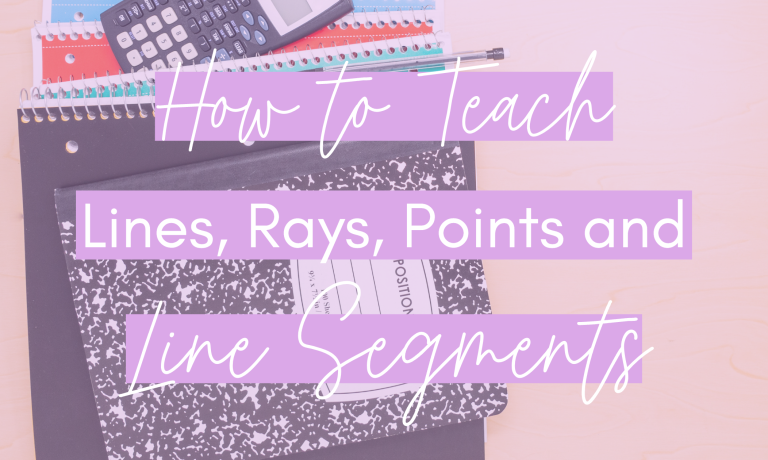Figuring out how to teach lines, rays, line segments, and points can be an important part of a geometry curriculum. These fundamental concepts form the building blocks for understanding more complex geometric ideas, and they can also help students develop their spatial reasoning skills.
What do the geometric terms mean?
The first part of figuring out how to teach lines is to explain that they are a one-dimensional geometric figure that extends indefinitely in both directions. They have no thickness and no endpoints. A line is often represented by a straight line on a piece of paper, but it can also be represented by a curved line.
A ray is a part of a line that starts at a particular point and extends indefinitely in one direction. It has one endpoint and extends without end in the other direction. A ray is often represented by a straight line with an arrowhead at one end, indicating the direction in which it extends.
A line segment is a part of a line that has two endpoints. It is a finite section of a line and has a definite length. A line segment is often represented by two points connected by a straight line.
Points are the most basic geometric figures. They have no size or dimension and are represented by a dot on a piece of paper.
Basic Characteristics
It is important to emphasize the difference between a line and a line segment. While a line extends indefinitely in both directions, a line segment has two definite endpoints. This can be a confusing concept for students, so it is important to provide plenty of examples and practice to help them understand the difference.
In addition to teaching the basic characteristics of lines, rays, line segments, and points, it is also important to introduce students to the terms used to describe these figures. For example, students should learn the terms “parallel,” “perpendicular,” and “intersecting,” as well as the concept of slope. These terms and concepts will be important as students move on to more advanced geometric topics.
How to Teach Lines, Rays, Points, and Line Segments
How to Use Real-World Examples to Teach Lines, Rays, Points, and Line Segments
One way how to teach lines, rays, points, and line segments is to use real-world examples. For example, you can show students a picture of a road and explain that the road is a line that extends indefinitely in both directions. You can then point out the various rays that extend from the side of the road, such as the rays of the sun or the rays of a street lamp. You can also use examples of line segments, such as the length of a book or the distance between two cities.
How to Teach Lines, Rays, Points, and Line Segments with Hands-On Activities
Another effective way to teach these concepts is to use hands-on activities. For example, you can have students use string or yarn to create lines, rays, and line segments. You can also have them use markers or crayons to draw these geometric figures on paper.
How to Teach Lines, Rays, Points, and Line Segments with Visual Aids
It can also be helpful to use visual aids, such as diagrams or charts, to help students understand the differences between these concepts. For example, you can create a chart that compares the characteristics of lines, rays, and line segments, highlighting the number of endpoints and the length of each figure.
How to Teach Lines, Rays, Points, and Line Segments with Interactive Games or Activities
Another way to teach these concepts is to use interactive games or activities. For example, you can have students play a game where they have to identify lines, rays, and line segments in a series of pictures. You can also have them create their own lines, rays, and line segments using manipulatives or by drawing on paper.
Overall when it comes to how to teach lines, rays, line segments, and points is an important part of a geometry curriculum. By using real-world examples, hands-on activities, visual aids, and interactive games, teachers can help students develop a strong foundation in these fundamental concepts. This foundation will be crucial as students move on to more complex geometric ideas and continue to develop their spatial reasoning skills.
